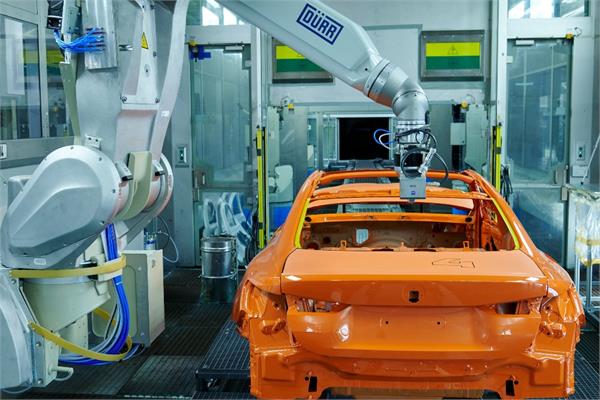
Dürr provided BMW Group with EcoPaintJet Pro to apply several designs and paint colours without stencils or masking.
The BMW Group plant in Dingolfing (Germany) is piloting a new overspray-free coating method that will allow to use and apply several paint colours and designs without stencils or masking
the body part. This new application process will increase the degree of customisation for customers and will improve the sustainability by reducing energy consumption and waste.
The company is using EcoPaintJet Pro for waterborne base coats and 2K clear coat in collaboration with the mechanical and plant engineering firm Dürr. The new application process is being used for the first time on 19 cars belonging to the BMW M4 Coupés series, which will soon roll off the production line with custom two-tone paintwork and M4 identification on the bonnet and tailgate.
“We expect the highest standards of efficiency, sustainability and digitalisation from our production. This smart painting technology meets all the re-querulents for an innovative production process and also offers unique customer benefits,” stated Milan Nedeljković, member of the Board of Management of BMW AG and responsible for Production.
While with the conventional procedure the paint is atomised by a rotating bell with 35 to 55,000 revolutions per minute and it adheres electrostatically to the body, the new method used by BMW does not involve electrostatics, relying instead on jet application. The paint is applied using an orifice plate that enables high edge definition with a variable paint thickness (between 1 and appr. 50 millimetres). It then allows to paint with two different colours, for example for a contrasting roof, and apply stripes and other designs – for instance, on the bonnet. In addition, it will now be possible to paint every exterior component.
Since, previously, these kinds of designs needed masking, the new process will virtually eliminate material and personnel costs. Moreover, as paint separation will not be required, the amount of air needed will decrease (at around 7,000 operating hours, more than 6,000 megawatt hours will be saved and carbon footprint reduced by nearly 2,000 tonnes per year).